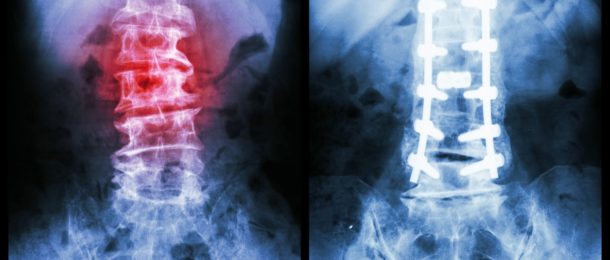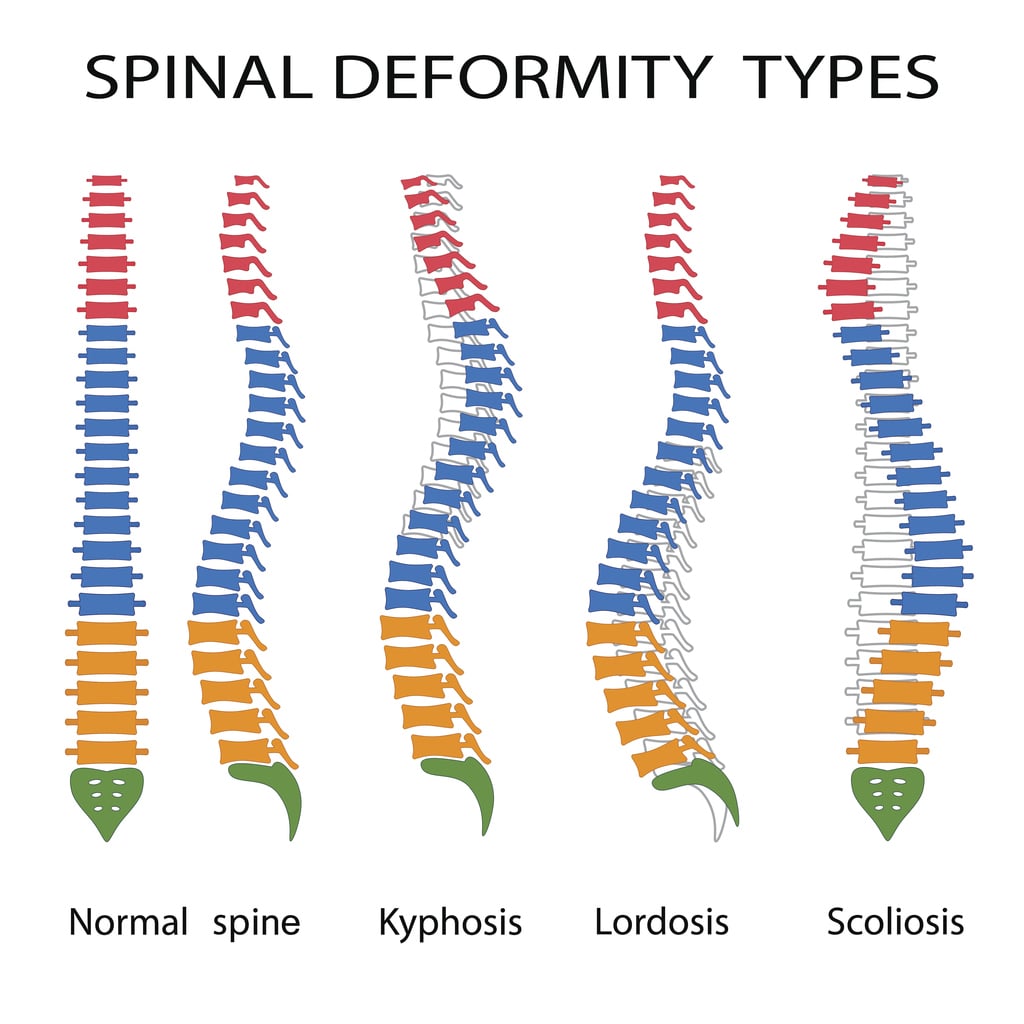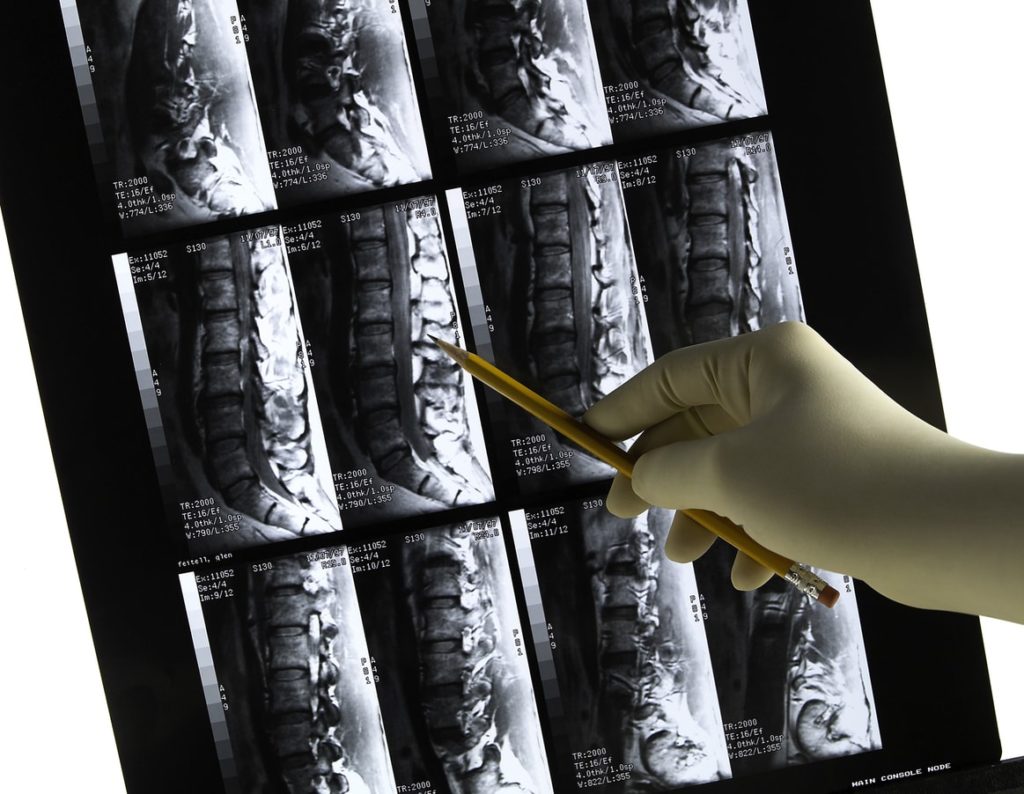Scoliosis Awareness Month: What to Know About This Disease

June is Scoliosis Awareness Month. The goal of this is to to educate, learn early detection and bring awareness about this disease.
From walking to breathing, the structural stability of our spine plays a key role. This is why severe scoliosis is debilitating if left untreated, and why untreated scoliosis can get worse as time passes and we put our body under exceeding amounts of stress. To understand scoliosis and the challenges it poses, it’s important to be aware of why and how the spine is important.
The condition of the spine determines our ability to move, stand, lie down, and generally be alive. Not only is it a physical pillar for our entire musculature, but the spine features the spinal cord, the only part of our primary nervous system/central nervous system not located exclusively in the brain. Damage to the spinal cord can be life-threatening, and can lead to paralysis, pain, and other forms of disability, severely affecting motor control.
In normal cases, the spine possesses a natural curve as it begins from the brainstem, all the way down to the tailbone. From top to bottom, it’s divided into six regions: the cervical (neck), thoracic (upper back), lumbar (lower back), sacrum (behind the glutes), and the coccyx (the tailbone). Curving almost like an S from a lateral view, the spine ideally maintains a straight line throughout the body when a person faces you.
Surrounding the spine are a series of muscles and bones critical for movement and survival. The placement of the rib cage is incredibly reliant on the angle of the spine, and in turn, determines how your organs grow and how your lungs expand during breathing. As we walk, lift objects, bend over, and lie down, different loads are exerted onto our bodies by gravitational forces and additional resistance, putting the spine under compression and shearing forces.
Lifting a box off the ground with your back, for example, will cause your vertebrae to potentially shift apart, thus requiring a straight spine and a strong back for support. Pushing something overhead, on the other hand, can place additional stress in a straight line down the center of your body (and onto your spine), compressing your vertebrae together.
So, for us to perform basic physical tasks – and even just walk and lie down without pain – our spine must be in a natural neutral position. Our spine curves naturally from a lateral view and straight from an anterior view.
But what happens if the spine is curved abnormally?
This Scoliosis Awareness Month, Comprehensive Pain Management Center strives to teach about this debilitating disease; the symptoms, causes, and treatments of scoliosis.
What is Scoliosis?
To expand scoliosis awareness, we’ll first explore what scoliosis is.
When viewed from the front, scoliosis presents as a sideways curvature of the spine, most often in the thoracic portion of the spine. Its symptoms often begin in adolescence and become more pronounced towards the end of puberty and in adulthood, and the curvature can rank anywhere from mild to very severe.
Mild scoliosis may lead to muscular imbalances, certain mobility issues and mild back pain, while severe scoliosis can lead to difficulty breathing, damage to the organs in and around the ribcage (especially the heart and lungs), and greater risk of injury through shearing forces applied to the spine.
Scoliosis is not the excessive curvature of the spine’s natural curves – these are usually symptoms of other spine-related issues, caused by injury, disease/infections, muscular weakness, or imbalance, and are described as kyphosis (a rounded upper back, also known as a hunchback) and lordosis (excessive curvature in the lower back, causing an anterior pelvic tilt).
While a person can present with both scoliosis and lordosis/kyphosis, these are separate spine issues. Each of them, however, come with complications related to back pain and quality of life.
Scoliosis Awareness: Identifying the Disease
Scoliosis awareness of symptoms are visually obvious in severe cases, appearing as significant unevenness in the hips and shoulders, and a tilt of the upper or lower back towards one side.
In mild cases, scoliosis can still present as unevenness in the shoulders, best measured by seeing if the collarbone aligns correctly. A proper diagnosis requires a thorough checkup by a medical professional.
While there is such a thing as the ideal human spine, it’s important to remember that human bodies are imperfect.
Imbalances are natural, and it’s not uncommon to have a slight sideways curvature in the spine, especially as a result of years of imbalanced loading, such as holding more weight on one side than the other in the form of a suitcase or heavy school bag.
For the sideways curvature of the spine to be considered scoliosis – a diagnosable condition in need of some form of treatment – most professionals look for a curve of at least >10 or >15 degrees. Anything below is unlikely to cause any issues for that person down the road.
What Causes Scoliosis?
While expanding scoliosis awareness, it’s important to learn what causes this debilitating disease.
However, the causes of most cases of scoliosis are virtually unknown. While we understand that genes have some role to play in how a person’s spine develops, it’s difficult to pinpoint the exact cause in most cases of scoliosis.
These are idiopathic scoliosis. In other, rarer cases, it may be the result of a neuromuscular disorder (neuromuscular scoliosis), birth defects (congenital scoliosis), or severe injury to the spine and surrounding tissue.
Another form that typically occurs with old age is degenerative scoliosis, which occurs because of atrophy of musculature around the spine.
Mild scoliosis can also be functional or nonstructural scoliosis, a temporary change in spinal curvature usually due to excessive force on one side of the body, another structural issue altogether (a shorter leg, for example), or musculoskeletal conditions causing muscle spasms and involuntary contraction.
Postural scoliosis is also a form of nonstructural or functional scoliosis. This can reverse itself without the need for any invasive treatment.
Healing Your Spine
The goal behind scoliosis awareness and treatment is diminishing the sideways curvature of the spine to the point where the patient no longer presents with back pain or organ damage because of their condition.
One way to further affect the effect scoliosis has on their bodies is through physical therapy and exercise. A pain management specialist will be able to improve your scoliosis awareness, and in turn create a pain strategy to effectively reduce your pain.
While scoliosis can limit a person’s mobility, it does not have to limit their strength or quality of life.
An extreme example is Lamar Gant, a renown American powerlifter with significant idiopathic scoliosis, and world records in the conventional deadlift, pulling around five times his own bodyweight off the floor.
Other examples of notable athletes with scoliosis include Usain Bolt and James Blake.
While scoliosis does present challenges to anyone pursuing athletic ability, the condition does not deny you your dreams. Several treatments today can greatly reduce the curvature of the spine, including invasive methods like surgery, and less invasive, effective methods such as physical therapy, and limited time spent in a spinal brace.
By gradually and consistently pushing the spine into a more natural position and greatly strengthening the muscles around the spine – particularly the erectors and trapezius – anyone with scoliosis can make great progress. Therapy to fix muscular imbalances because of spinal curvature can also mitigate back pain and reduce muscle spasms.
Scoliosis is a chronic disease, which means it does get worse and comes back if not regularly counteracted and treated. However, regular exercise and frequent checkups can drastically improve your quality of life, and even make you pain-free.
Contact your pain management center today to learn more about scoliosis awareness, and how you can treat this disease.


